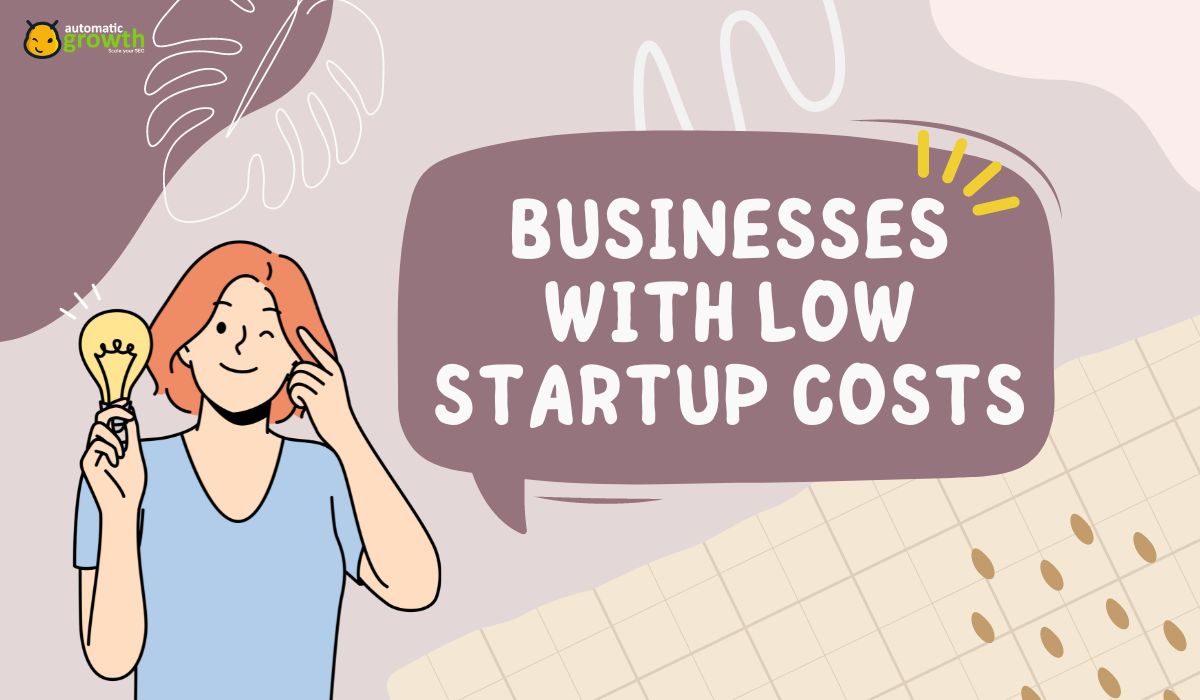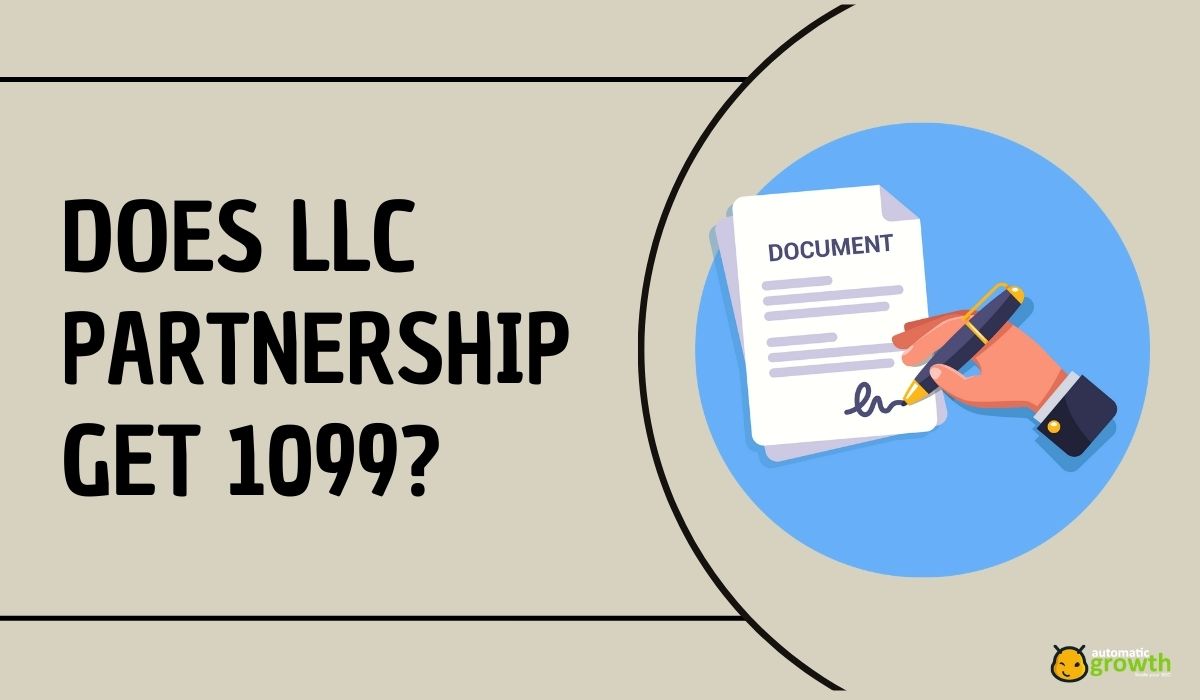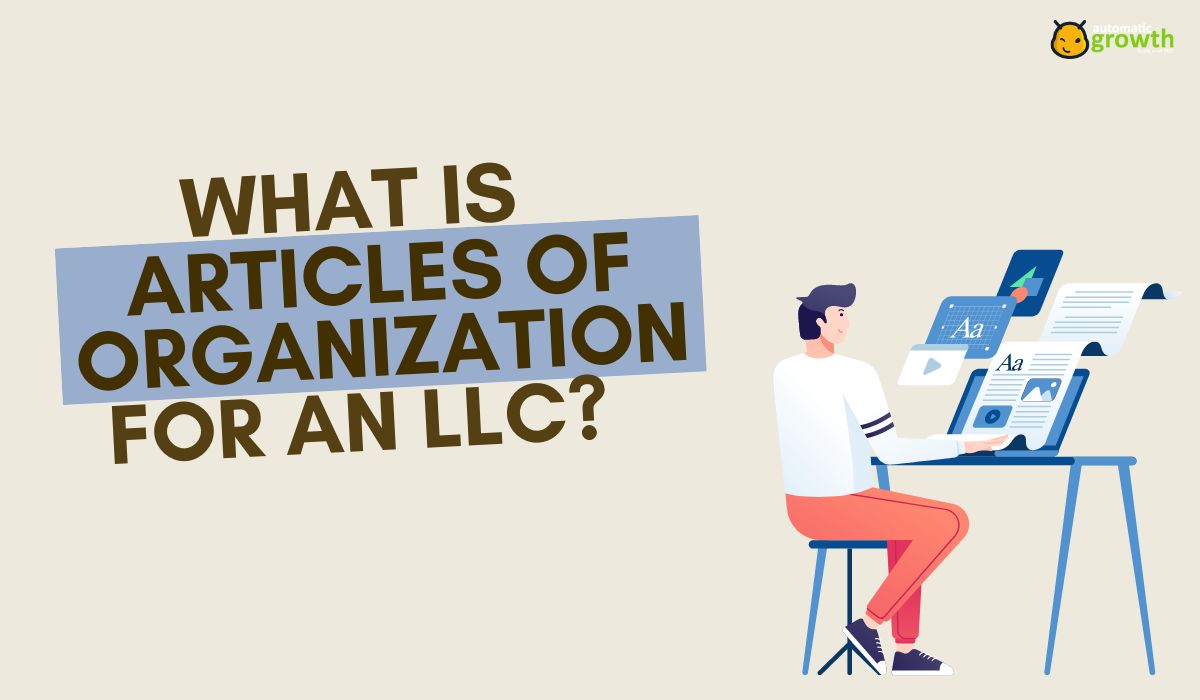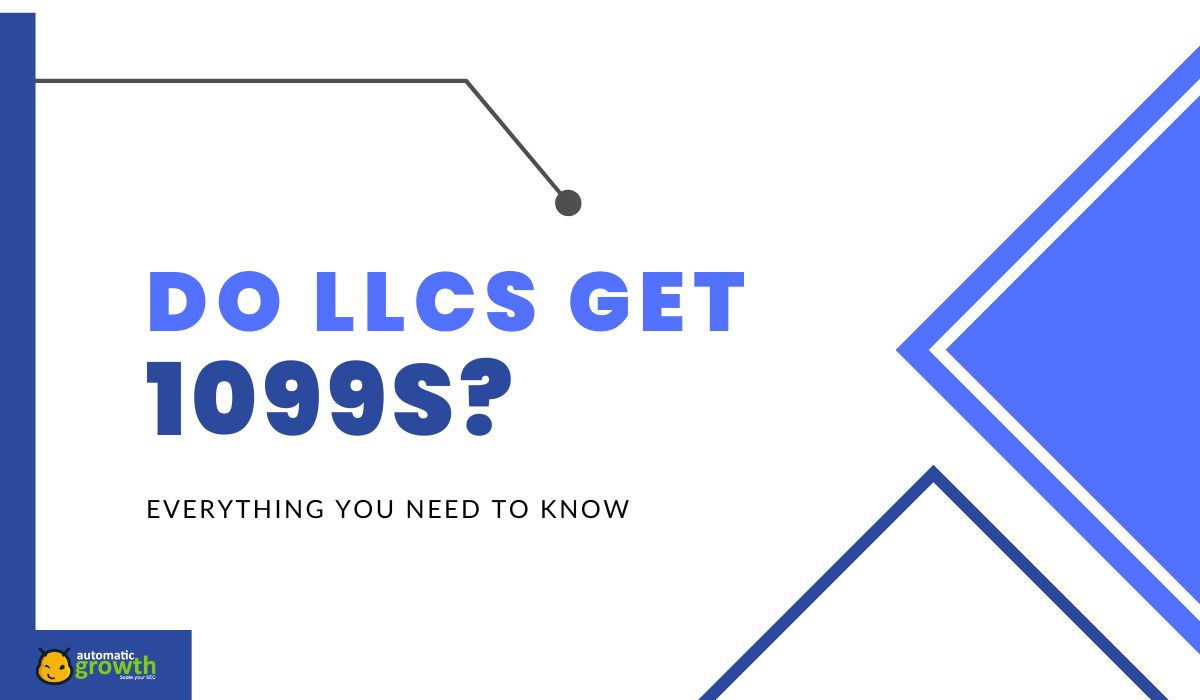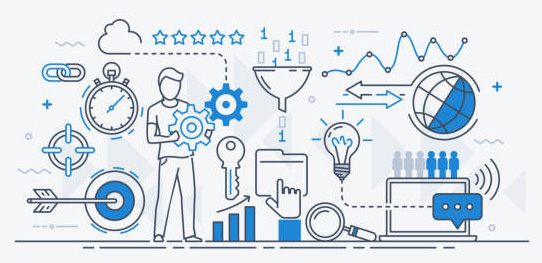In the world of entrepreneurship, there's a golden rule many seek to live by: start small, dream big. For many aspiring business owners, large initial investments can be a daunting barrier to entry. Yet, in the modern age, there's a growing array of business models that defy this conventional financial obstacle, offering opportunities to launch with minimal capital while still promising lucrative returns.
For novice entrepreneurs, exploring businesses with low startup costs can balance the scales of risk and reward. Whether you're a budding entrepreneur on a tight budget or someone looking to diversify their income streams, this guide offers insights into businesses that demand low startup costs but have the potential to yield high profits.
1. Dropshipping E-commerce Store
The fundamental concept of a dropshipping e-commerce store is to sell products without handling the inventory or shipping process. In essence, the store owner partners with suppliers and serves as a "middleman." When customers order products from the store, the owner purchases the product from the supplier, who then ships the item directly to the customer.
The ROI in dropshipping can be quite high, primarily because the initial capital needed is low. Given that you haven't invested in inventory, the principal costs you'll incur will be marketing, website maintenance, and any software or platform fees. Even with these subtracted, margins can remain healthy, leading to a net profit margin often between 20-30%.
Average Costs to Start
-
Platform Fees: Platforms like Shopify or WooCommerce facilitate dropshipping. Shopify, for instance, charges a monthly fee starting at $29.
-
Domain Name: Purchasing a unique domain name costs around $10 to $15 annually.
-
Design and Templates: While many platforms offer free templates, premium ones can range from $20 to $200. A one-time fee for a professional logo might cost another $50-$300.
-
Marketing Costs: This is where it can get variable. Initial Facebook or Google Ad campaigns might start at $5-$10 a day. SEO (Search Engine Optimization) and content marketing, if outsourced, can also come with their own costs.
-
Apps and Tools: Dropshipping-specific tools like Oberlo or SaleHoo might have monthly or annual fees. These can range from $20 to $100 per month based on the functionalities they offer.
-
Miscellaneous: Other costs like transaction fees, returns, or customer service tools can add up, though they tend to be minor relative to revenue as sales volume grows.
All in all, an initial budget of $100-$500 can get a basic dropshipping store off the ground. However, sustained marketing efforts and reinvestment from initial sales are crucial to scale and achieve those high profit margins.
2. Affiliate Marketing
Affiliate marketing involves promoting products or services offered by other companies and earning a commission for every sale made through your referral link. The process typically involves three main parties:
-
The Affiliate: This is you. You promote products/services and earn a commission on each sale made through your promotional efforts.
-
The Merchant: The original seller or creator of the product/service. They provide affiliates with unique tracking links and pay them commissions for sales generated.
-
The Customer: The person who buys the product/service through the affiliate's promotional methods.
The beauty of this model is that you don't need to create a product, handle logistics, or manage customer service. Your primary role is to connect potential buyers (audience) with the product or service. The return on investment for affiliate marketing can be substantial, especially when you consider the minimal upfront costs.
Average Costs to Start
-
Website and Hosting: The foundation for most affiliates is a blog or website. Costs can be broken down into domain registration (around $10-$15 annually) and hosting (typically starting from $3-$10/month for basic plans).
-
Content Creation: If you're writing content yourself, this cost is essentially free. However, if you're outsourcing, you might pay anywhere from $20 to $100+ per article, depending on the quality and length.
-
Design and Templates: Many blogging platforms come with free themes, but premium themes that offer better functionality can range from $30 to $100 as a one-time fee.
-
Marketing Costs: While organic SEO is a powerful tool for affiliate marketers, some also use paid advertising. Platforms like Google Ads or Facebook Ads can start at as little as $5/day, but the exact amount is highly variable based on the strategy.
-
Tools and Plugins: To enhance website functionality, track affiliate sales, or improve SEO, various tools can be beneficial. Monthly costs for tools like SEMrush, Ahrefs, or premium WordPress plugins can range from $10 to $100/month.
In totality, you can initiate an affiliate marketing business for as low as $100-$300, considering essential costs. However, as with most business models, success often requires consistent effort, learning from mistakes, and being patient.
3. Blogging with Ad Revenue
Blogging has transformed from a mere hobbyist activity to a full-fledged business model, with many individuals and entities making significant income primarily through ad revenue.
The primary objective of a blogging business model relying on ad revenue is to produce high-quality, engaging content that attracts a significant amount of web traffic. Once consistent traffic is achieved, various advertising strategies can be employed to monetize the audience. These typically include:
-
Display Ads: These are visual ads that appear on your blog, provided by ad networks like Google AdSense, Mediavine, or AdThrive. You get paid based on impressions (CPM) or clicks (CPC)
-
Native Ads: These are content-based ads that blend seamlessly with your blog content
-
Affiliate Ads: Apart from direct ad revenue, bloggers often incorporate affiliate links within their content
The ROI from blogging with ad revenue is directly proportional to your traffic volume and the ad strategies you employ.
Average Costs to Start
-
Domain and Hosting: A domain typically costs around $10-$15 annually. Hosting for beginners, like shared hosting plans from providers like Bluehost or SiteGround, starts from $3 to $10/month.
-
Content Creation: If you're a solo blogger, then your only cost here is time. However, if you're outsourcing, quality articles might range from $30 to $200+ each.
-
Design and Themes: While there are free themes available, premium themes offer better design and functionality. These can range from $30 to $150 as a one-time fee.
-
Plugins and Tools: Essential plugins for SEO, social sharing, and website optimization can have costs. Premium plugins or tools can range from $20 to $200/year.
-
Marketing and SEO: Organic traffic is a major goal, but some bloggers invest in paid ads or SEO tools. Monthly costs for tools like SEMrush or Ahrefs can range from $99 to $399/month. Additionally, advertising on platforms like Facebook can vary based on your budget.
-
Education: Many bloggers invest in courses to refine their skills, ranging from $50 to several hundred dollars.
Considering essential expenses, a basic blogging setup can start from as low as $50-$200. However, the beauty of blogging is its scalability. With strategic content creation and effective SEO, a blog's traffic (and thus its revenue) can grow exponentially, ensuring a strong ROI in the long run.
4. Handmade Crafts or Print-on-Demand
The rise of online marketplaces and innovative print technology has made it simpler for artisans and designers to convert their passion into a lucrative business model. Among these, the handmade crafts and print-on-demand (POD) models stand out.
-
Handmade Crafts: Here, entrepreneurs create unique handmade items – this could be jewelry, clothing, home décor, art, or virtually any tangible good. Once created, these items are then sold on platforms like Etsy, Handmade at Amazon, or at local craft fairs.
-
Print on Demand: This is a digital-first model where designers create graphics or text-based designs that customers can choose to print on a variety of products like t-shirts, mugs, posters, or books. When a customer orders, the product is printed and shipped by a third-party supplier. Platforms like Teespring, Printful, and Merch by Amazon facilitate this model.
Average Costs to Start
Handmade Crafts:
-
Materials: Jewelry can start at $50, while larger crafts may reach $500+.
-
Tools: Basic tools start at $20, with specialized equipment costing $500+.
-
Online Storefront: Etsy charges $0.20 per listing and a 5% transaction fee.
Print on Demand:
-
Design Software: Options range from free tools like GIMP to Adobe Illustrator at $20.99/month.
-
Online Storefront: Teespring is free, while platforms like Shopify start at $29/month. Note: POD platforms charge per sale.
-
Marketing: Initial ad spend for platforms such as Facebook or Instagram ranges from $100-$500.
Starting costs for handmade crafts range from $70 to over $1,000. For POD, it can be as low as $0, going up to around $550 with professional tools and marketing.
Ways to Finance Your Business Venture
Securing the right financing is often a pivotal step when launching a new business venture. There are several methods to consider:
-
Personal Savings: This is about using one's own accumulated funds. The advantage here is that there's no interest or debt, and you retain full control of your business. However, the downside is the risk associated with depleting personal savings.
-
Bank Loans: These are traditional loans sourced from banks or credit unions. While they offer established lending terms and potentially larger amounts, they come with interest, and there may be strict credit requirements.
-
Angel Investors: These are wealthy individuals providing capital for a business in exchange for equity or convertible debt. They often offer industry expertise and connections, but they may ask for a stake in the company.
-
Venture Capitalists: These are professional investment groups that pool funds from various sources to invest in startups. The potential for significant funding and industry connections is there, but they usually require equity and can influence business decisions.
-
Crowdfunding: Platforms like Kickstarter enable businesses to raise money from the general public. This method helps validate a business idea without the need for debt or equity but requires a compelling campaign and may have platform fees.
Frequently Asked Questions
1. What are businesses with low startup costs?
Businesses with low startup costs are those that require a minimal investment to get started. These businesses typically do not require a physical storefront or expensive equipment, making them more accessible to individuals with limited funds.
2. Why should I consider starting businesses with low startup costs?
Starting businesses with low startup costs has several advantages. Firstly, it reduces the financial risk associated with entrepreneurship. With less money at stake, you can test out your business idea without major consequences if it doesn't work out.
3. What are some examples of businesses with low startup costs?
There are numerous business ideas that can be launched with minimal investment. Some popular examples include freelance writing or graphic design services, online tutoring or coaching, handmade crafts or products, dropshipping, social media management, and affiliate marketing.
4. How can I fund my low-cost startup?
Bootstrapping is a common way to fund a low-cost startup. This means using your personal savings or relying on friends and family for financial support. Another option is crowdfunding, where you can pitch your business idea to potential investors who may be interested in supporting your venture.
5. How can I market my business with a limited budget?
Marketing on a limited budget requires creativity and resourcefulness. Utilize social media platforms to create profiles for your business and engage with your target audience.
Maximize Your Income With Affiliate Marketing
Businesses with low startup costs present an attractive option for budding entrepreneurs. They offer a more accessible entry point, reducing the financial barriers typically associated with launching a new venture.
Looking to boost your revenue without the added inventory? Dive into the world of affiliate marketing and capitalize on commissions from products and services you trust and endorse. Start your affiliate journey today and watch your earnings multiply!

